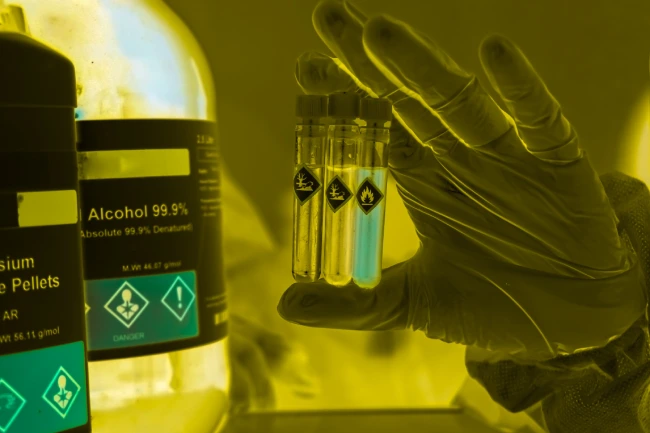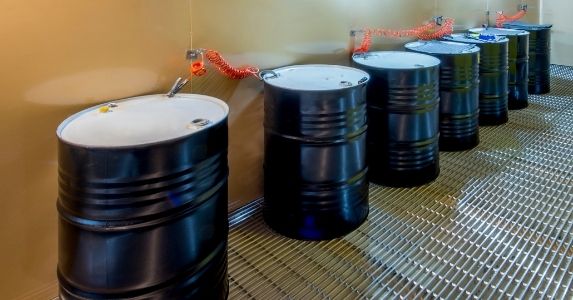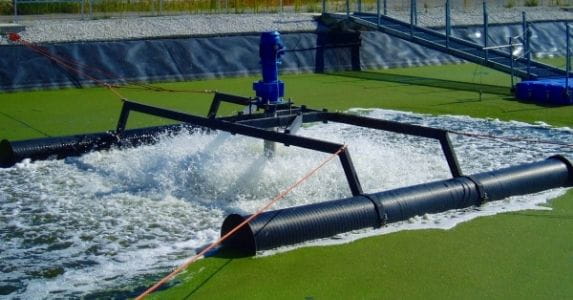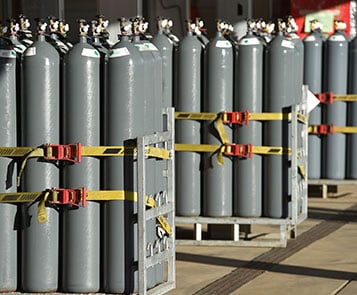Tier II Reporting Explained: What You Need to Know
Tier II reporting is complex yet vital. This yearly report, due on March 1, is a crucial communication about the hazardous substances within your facility, benefiting environmental and community safety and emergency preparedness. If your facility stored certain hazardous substances above pre-set thresholds at any point during the previous year, the Environmental Protection Agency’s (EPA’s) Emergency Planning and Community Right-to-Know Act (EPCRA) mandates reporting—if you fail to do so, you risk fines, noncompliance, and unsafe communities.
In this comprehensive guide, we will cover EPCRA Tier II reporting deadlines, requirements, relevant thresholds, how to file a Tier II report, and more.
What is Tier II Reporting?
A Tier II report, formally called an Emergency Planning and Community Right-to-Know Act (EPCRA) Hazardous Chemical Inventory Report , is required under Section 312 of the Emergency Planning Community Right-to-Know Act (EPCRA) of 1986. State-specific Tier II reports may be known as the Community Right-to-Know (CRTK), Right-to-Know (RTK), or other names. There are many EPCRA reporting requirements, but the Tier II report requirements dictate that any organization that stored hazardous chemicals and Extremely Hazardous Substances (EHSs) above certain thresholds during the previous calendar year must submit a report detailing the hazards of the chemical, quantity, and location. This report must be submitted to the relevant State Emergency Response Committee (SERC), Local Emergency Planning Committee (LEPC), and local fire department by March 1 of every year.
Why Tier II Reporting Matters
Tier II reporting helps with:
- Compliance with the Environmental Protection Agency (EPA) as well as state and local agencies
- Avoidance of penalties and enforcement actions
- Support for local emergency responders
- Public transparency and brand reputation
- Protection for the community and the environment
How Tier II Reports Fit into Emergency Planning and Community Safety
Tier II reporting helps ensure community safety by providing emergency responders with critical information which ensures better emergency response planning and strategies. When organizations are compliant with Tier II reporting requirements, first responders (and the community at large) are aware of the threats present in their communities—ultimately allowing them to respond better to dangerous situations.
Who Needs to Submit Tier II Reports?
Various facilities across industries that are located within the United States may need to complete a Tier II report. Your volume of chemicals on site will be the deciding factor. Below are the reporting thresholds:
Hazardous Materials Reporting Thresholds
- Extremely hazardous substances (EHSs): Greater than or equal to 500 pounds (227 kg) or the threshold planning quantity (TPQ), whichever is less. A list of EHSs can be found here
- Hazardous substances (i.e., a material that is required to have a Safety Data Sheet (SDS): Greater than or equal to 10,000 pounds (4,540 kg)
- Gasoline (all grades combined), at a retail gas station, with the tank(s) stored entirely underground: Greater than or equal to 75,000 gallons (or approximately 283,900 liters)
- Diesel fuel (all grades combined) at a retail gas station, with the tank(s) stored entirely underground: Greater than or equal to 100,000 gallons (or approximately 378,500 liters)
As a reminder, always check your state and local government reporting requirements for Tier II; there may be additional or lower thresholds.
Mixtures
If you have chemical mixtures onsite, you will need to consider the different components of the mixture, as these will count towards the chemical thresholds.
Roles Responsible for Compliance
Everyone that is responsible for hazardous materials handling on a site is responsible for ensuring a EPCRA Tier II report is filed. EHS managers, waste management personnel, EHS teams, and even forklift operators all need to work together to ensure accurate reporting—and to make sure a report is filed on time.
Industries Most Affected by Tier II Reporting
Any organization that stores hazardous chemical(s) that meet or exceed chemical thresholds at any one time. This includes Life Sciences, Manufacturing, Healthcare, and more. If you’re not sure if your facility needs to report, look for EHS compliance reporting help.
State-Specific Variations
In this blog, we discuss the national EPCRA Tier II reporting requirements. Some states, however, may have different rules regarding reporting frequency, chemical thresholds, who needs to report, and more. New York Tier II reporting, for example, varies in requirements to that of Ohio or California. To determine your specific rules, review the State Tier II Reporting Requirements and Procedures from the Environmental Protection Agency (EPA).
Let's Look at Some Tier II Reporting Scenarios
Scenario 1:
Question: A manufacturing facility has 2,000 lbs. of acetone. Will they need to report?
Answer: No, the reporting threshold (10,000 lbs.) has not been reached.
Scenario 2:
Q: A laboratory has a total of 2,000 gallons of ethanol, and they have 16 gallons of chloroform on site. Will they need to report?
A: Yes and no. The weight of 5,000 gallons of ethanol is ~ 13,000 lbs.; The reporting threshold for ethanol (10,000 lbs.) has been reached. Chloroform is an EHS, so the threshold we need to observe is 500 lbs. or its TPQ (10,000 lbs.), whichever is less—since chloroform’s TPQ is greater than 500 lbs., we have to comply with the 500 lbs. reporting threshold. The weight of 16 gallons of chloroform is ~ 200 lbs.; The threshold for chloroform has not been reached. This facility needs to file a Tier II report, but only needs to report ethanol.
Scenario 3:
Q: A retail gas station has 5 underground gasoline tanks. Each tank’s capacity is 25,000 gallons. Will they need to report?
A: Yes, the reporting threshold (75,000 gallons) has been reached.
Tier II Reporting Requirements
At a minimum, by March 1 of each year, Tier II reports are required to include:
- The name and the Chemical Abstracts Service (CAS) number for each reportable chemical
- Physical and health hazard information for the chemical
- Storage and facility information
- The quantities of reportable chemicals on site
There are also strict documentation and recordkeeping expectations—organizations must maintain a reliable chemical inventory management solution throughout the year; state governments may require retention of documentation beyond this. If you are unsure of your record keeping requirements, look for EHS compliance reporting help.
Who Receives Tier II Reports?
Organizations must submit Tier II reports to their State Emergency Response Commission (SERC), Local Emergency Planning Committee (LEPC), and local fire departments.
What Happens if You Miss the Tier II Reporting Deadline?
If you miss the EPCRA Tier II reporting deadline of March 1, the EPA can impose 6-digit-level fines for noncompliance. Missing the Tier II reporting deadline also means that communities are less safe as emergency responders don’t have up-to-date information. This could result in legal liabilities or reputational damage to the offending organization.
Why Early Tier II Reporting Preparation Is Essential
Tier II reports are complex, and the process can be lengthy for those who are unprepared. Early preparation, including implementation of a chemical inventory management solution and reaching out to an EHS compliance reporting partner early, can save headaches, time, and money in the long run.
How to File Tier II Reports
The nine key steps outlined below can help prepare you to file your Tier II report on time and in full compliance.
- Start Planning Early: Early planning prevents rushing—and thus, mistakes—throughout the process. Allow yourself plenty of time to prepare and research so any complex questions that arise can be solved in advance, preventing problems later on. Gathering information and setting up a chemical inventory management solution will take time, so it's best to start as the previous year is ending.
- Understand Reporting Laws: Familiarize yourself with the reporting thresholds for hazardous materials present within your facility. Read about the Tier II reporting process and look over the information that will be asked for on the forms.
- Identify Hazardous Chemicals: Review your chemical inventory management software for listed hazardous materials to identify which needs to be included in your Tier II report.
- Compare Your Chemical Inventory Data to Associated Thresholds: A thorough facility inspection and up-to-date chemical inventory data for the previous year will allow you to identify the amount and type of chemicals stored on site at any point, which will determine if a Tier II report is required, and for which chemicals.
- Determine What to Include in Your Report: Once you have determined which chemicals need to be included, you also need to find out what information to include in the report. Hopefully, you prepared early and are aware of exactly what information is present on the form. Gathering all of this information can help you be more prepared and make reporting quick and easy.
- Gather Chemical and Facility Data: Once you know what information needs to be included in the report, gather the data you need.
- Ensure Emergency Preparation: Accurately reporting chemicals, amounts, locations, and potential hazards can help your SERC, LEPC, and fire department respond quickly and efficiently in the event of a major emergency. These organizations will be able to more appropriately plan and prepare for such events with accurate information—and well-prepared emergency responders will enable a more efficient response, reducing liability and injuries.
- Ask for Help with Reporting Obligations: Contact Triumvirate Environmental for EHS compliance reporting support right away if you have questions about your obligations or the process.
- File Your Tier II Report: The EPA provides the federal guidelines and the reporting software, but the specific submission process and required forms are determined by each state. Review your state-specific Tier II reporting requirements to determine the specific process by which to file your report. You may need to use Tier2 Submit if your state requires submission to the EPA.
Common Tier II Reporting Mistakes to Avoid
There are a few common Tier II reporting mistakes that will impact overall EPCRA Tier II reporting compliance:
- Missing hazardous chemicals
- Incorrect chemical identification
- Outdated facility information
- Missing state-required details
- Missing or outdated Safety Data Sheets (SDSs)
Making any of these mistakes will prevent your organization from achieving full compliance.
State-Specific Tier II Guidelines
Although Tier II reporting is a federal requirement, facilities do not submit their report directly to the EPA; they must follow the reporting requirements as set by their state. Ultimately, each state develops its own version of the Tier II form and has specific submission requirements that are identical to or stricter than the federal requirements.
New York Tier II Reporting Guidelines
If a facility is located outside of New York City but within New York State, they have to comply with New York State's Tier II reporting requirements. New York State reporting thresholds are identical to EPCRA thresholds and are also due on March 1 annually, but Tier II submission should be through the New York State online reporting system e-Plan.
If a facility is located inside New York City (NYC), they need to comply with the city’s Tier II program, managed by the New York City Department of Environmental Protection (NYCDEP). NYC is densely populated and, as such, has lower reporting thresholds than the federal and state guidelines. In addition, NYC's thresholds vary by chemical and may be lower than the federally-set thresholds. Reports should always be submitted through the NYCDEP online reporting system and are due on March 1.
How Triumvirate Environmental Can Help With Tier II Reporting
The Triumvirate Environmental teams are waiting to help you prepare to submit Tier II reports. We offer:
- Tier II reporting support and consulting
- EHS compliance reporting services
- Regulatory compliance EHS audits
- Chemical inventory management software and implementation
Tier II Reporting FAQs
What is the Tier II reporting deadline?
March 1 of every year.
Who must file Tier II reports?
Any organization that, in the past year, has stored above the specific thresholds of certain pre-determined chemicals and hazardous substances.
What chemicals are subject to reporting?
A substance is considered hazardous if it is required to have a Material Safety Data Sheet (MSDS) or Safety Data Sheet (SDS) and meets the definition of a hazardous chemical under OSHA 29 CFR 1910.1200(c). Any onsite material that meets this definition needs to be included on a Tier II report.
What are the Tier II reporting thresholds?
- Extremely hazardous substances (EHSs): 500 pounds (227 kg) or the threshold planning quantity (TPQ), whichever is less. A list of EHSs can be found here.
- All other hazardous substances: 10,000 pounds (4,540 kg) each for any material that has a Safety Data Sheet (SDS).
How do Tier II and Tier I Reports differ?
Tier I reports are required by federal law, whereas Tier II requirements are state-by-state based on local commissions.
How do I check my state's reporting requirements?
You can review state Tier II reporting requirements here.
What are the penalties for noncompliance?
- Noncompliance fines
- Loss of public trust
- Unsafe environments and communities
- Potential legal liability
Get Tier II Reporting Help
If you are confused or overwhelmed with reporting obligations, Triumvirate Environmental can help. Our compliance experts can help you review chemical inventory, provide consulting, and help you meet the March 1 deadline for filing Tier II reports. Start now—don’t wait. Request help for Tier II reporting support and EHS compliance services.






